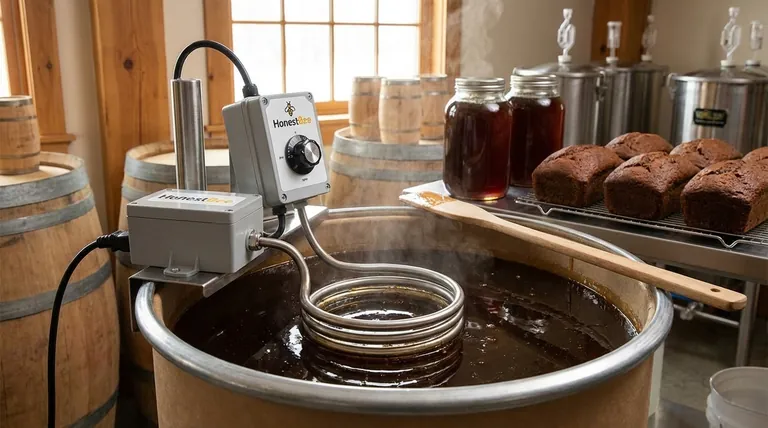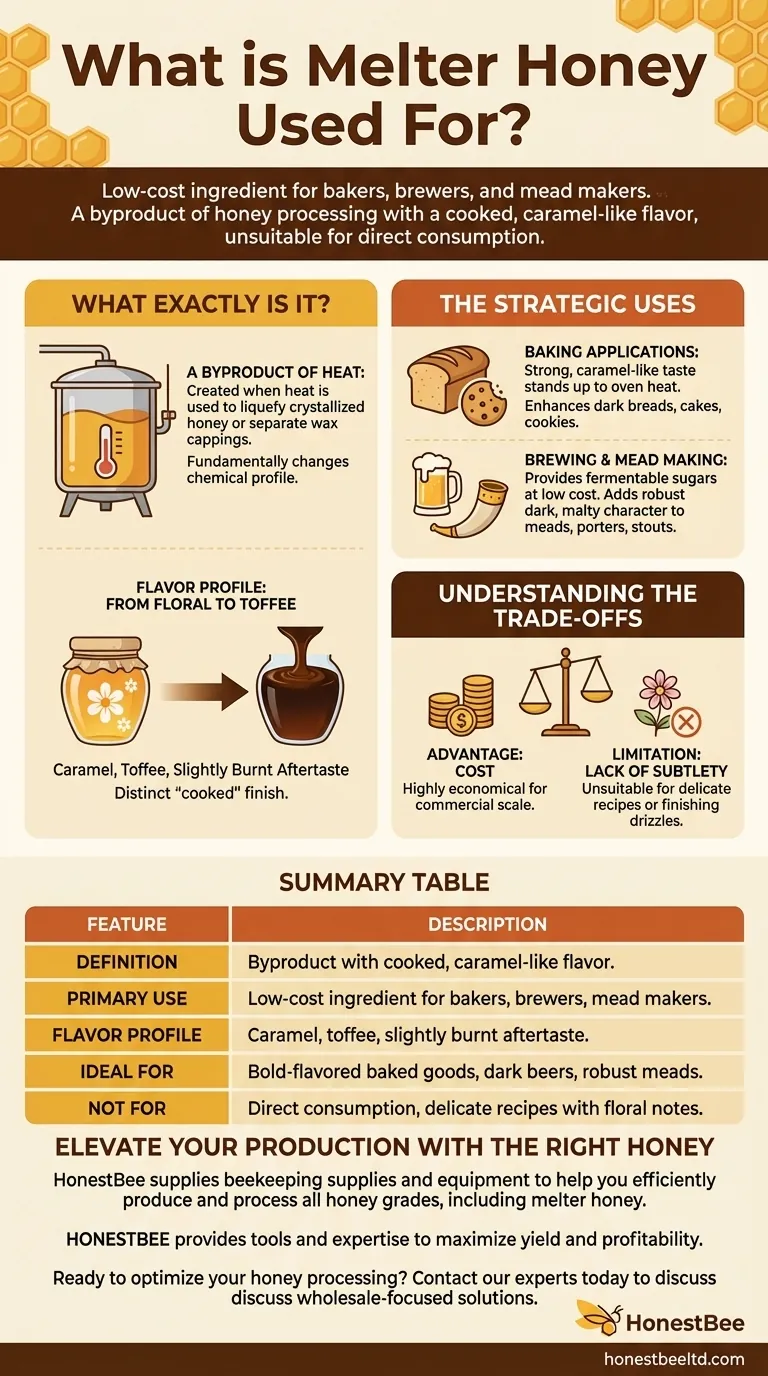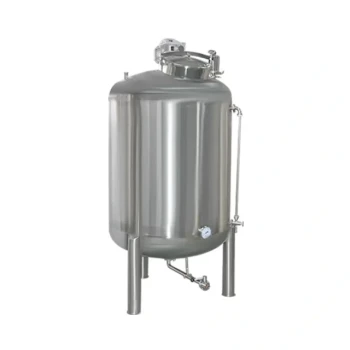In short, melter honey is used as a low-cost ingredient by bakers, brewers, and mead makers. It is a byproduct of honey processing where heat has altered the flavor, giving it a caramel or toffee-like character with a slightly burnt aftertaste. This makes it unsuitable for direct consumption but valuable for specific industrial applications where a robust, cooked flavor is desired.
Melter honey is not a table honey for your tea or toast; it is a specialized, cost-effective industrial ingredient chosen specifically for the strong, caramelized flavor it imparts during baking and fermentation.

What Exactly Is Melter Honey?
Melter honey gets its name and characteristics from the process that creates it. It is essentially honey that has been "cooked" as an unintentional consequence of heat exposure during processing.
A Byproduct of Heat
This type of honey is often created when beekeepers or processors use heat to liquefy large batches of crystallized honey or to separate residual honey from wax cappings. This exposure to heat fundamentally changes the honey's delicate chemical profile.
The Flavor Profile: From Floral to Toffee
Unlike the bright, floral notes of raw honey, melter honey develops a much darker and more robust flavor. The heating process caramelizes the sugars, resulting in notes of caramel, toffee, and a distinct "cooked" or slightly burnt finish.
Why It's Considered "Unwanted"
For the primary honey market, where consumers expect a fresh, delicate taste, this cooked flavor is considered a flaw. It no longer fits the profile of a premium table honey, which is why it is separated and sold as a lower-cost byproduct.
The Strategic Uses of Melter Honey
What makes melter honey undesirable as a table honey is precisely what makes it valuable in other contexts. Its strong flavor and low cost are assets in the right application.
Baking Applications
In many baked goods, a delicate honey flavor would be lost. The assertive, caramel-like taste of melter honey can stand up to the heat of the oven and complement other ingredients in products like honey cakes, dark breads, and some cookies.
Brewing and Mead Making
Fermentation can significantly alter or strip away the subtle nuances of expensive floral honeys. Brewers and mead makers use melter honey to provide fermentable sugars at a much lower cost, while its robust flavor contributes a desirable dark, malty character to meads, porters, or stouts.
Understanding the Trade-offs
Choosing melter honey is a decision based on balancing cost against a very specific flavor profile.
The Primary Advantage: Cost
The single greatest benefit of melter honey is its price. As an industrial byproduct, it is a highly economical way to incorporate the sweetness and functional properties of honey into a product on a commercial scale.
The Main Limitation: A Lack of Subtlety
The defining characteristic of melter honey—its cooked flavor—is also its biggest limitation. It is completely unsuitable for any application where a fresh, light, or floral honey taste is the goal. Using it as a finishing drizzle or in a delicate beverage would be a mistake.
Making the Right Choice for Your Goal
Selecting the correct type of honey depends entirely on the intended final product.
- If your primary focus is cost-effective fermentation: Melter honey is an excellent choice for providing fermentable sugars and a bold, toffee-like flavor foundation in beer and mead.
- If your primary focus is bold-flavored baked goods: The strong, caramel notes of melter honey can enhance recipes where a cooked-sugar taste is a feature, not a flaw.
- If your primary focus is a delicate, premium product: You must avoid melter honey and invest in a high-quality table or floral honey to preserve the fresh flavor profile.
Ultimately, melter honey is a specialized tool, offering a cost-effective solution when its unique cooked-flavor profile is an asset to your recipe.
Summary Table:
| Feature | Description |
|---|---|
| Definition | A byproduct of honey processing with a cooked, caramel-like flavor. |
| Primary Use | Low-cost ingredient for bakers, brewers, and mead makers. |
| Flavor Profile | Caramel, toffee, with a slightly burnt aftertaste. |
| Ideal For | Bold-flavored baked goods, dark beers, and robust meads. |
| Not For | Direct consumption or delicate recipes requiring floral honey notes. |
Elevate Your Production with the Right Honey
As a commercial apiary or beekeeping equipment distributor, choosing the correct honey type is crucial for your products' success. Melter honey offers a powerful, cost-effective solution for large-scale baking and brewing operations.
HONESTBEE supplies beekeeping supplies and equipment to help you efficiently produce and process all honey grades, including melter honey. We provide the tools and expertise to maximize your yield and profitability.
Ready to optimize your honey processing? Contact our experts today to discuss how our wholesale-focused solutions can benefit your operation.
Visual Guide

Related Products
- Professional Thermostatic Conical Honey Melter
- 8-Frame Electric Self-Reversing Honey Extractor Spinner for Commercial Honey Extraction Equipment
- Honey Concentrating Vacuum Heating Thickening Machine Dehumidifier for Honey
- HONESTBEE 72 Frame Industrial Electric Honey Extractor for Beekeeping
- 6 Frame Manual Stainless Steel Honey Extractor Beekeeping Equipment
People Also Ask
- At what temperature does honey flow? Preserve Quality with the Perfect 95°F Sweet Spot
- How does the Bee Blanket help maintain honey quality? Preserve Enzymes with Gentle Hive-Mimicking Heat
- Why is it important to heat honey slowly and evenly? Preserve Flavor, Nutrients & Value
- What is the effect of heating on honey? Preserve Quality with Controlled Warming
- How to permanently decrystallize honey? Embrace Its Natural State for Maximum Quality



















